~~~
Blog Post – 3rd October 2013
~~~
Short stories about love, sex, passion, and loss
By Jim Byrne
~~~
Introduction
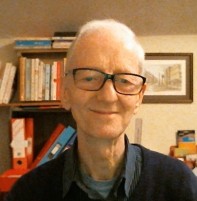 Last year, I published a book of short stories about love, sex, passion, and loss. I am now planning to add two or three new stories to that book, and to republish it.
Last year, I published a book of short stories about love, sex, passion, and loss. I am now planning to add two or three new stories to that book, and to republish it.
Here is the first of those new stories, gratis!
I hope you enjoy it!
Jim
~~~
A Cat and Mouse Adventure
By Jim Byrne
Copyright © Jim Byrne, 2023
~~~
The story begins…
September 2014
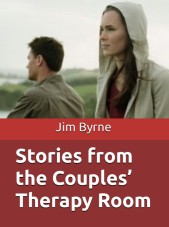 Susan was convinced that everybody should be able to have a happy relationship, even though she had been distinctly unsuccessful in this endeavour, so far.
Susan was convinced that everybody should be able to have a happy relationship, even though she had been distinctly unsuccessful in this endeavour, so far.
She spent a lot of her time ruminating about this issue. What is the glue that holds a relationship together?, she sometimes wondered.
And where does all the misery come from?
Why was she attracted to this older man, twenty years older than her thirty-five years? And why can’t she trust him?
***
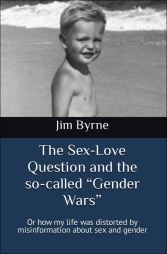 He is out there now, on the forecourt in front of their bungalow, outside the garage, clicking around in those silly cycling shoes, in his tight Lycra pants, and with a big S for Superman on the back of his cycling jacket. Superman! What a baby!
He is out there now, on the forecourt in front of their bungalow, outside the garage, clicking around in those silly cycling shoes, in his tight Lycra pants, and with a big S for Superman on the back of his cycling jacket. Superman! What a baby!
Susan watches him through the living room window with mixed feelings. A lovely baby, once; now a maddening baby! A crazy-making fifty-five year old baby!
What is he doing to his bike, which is upside down on the drive? He spends a lot of time meddling with things. Bicycle parts. Motorcar parts. Things that don’t include her.
It was very different last year, in the middle of summer, when they’d met at a friend’s party. It was love at first sight, for both of them. They slipped so easily into a cocoon of comfortable conversation and intimate touch.
Within three weeks they rented this bungalow, and moved in together.
He was so exciting to be around; so much fun. So charming. Full of energy and very active. He was the life and soul of any party they went to; and he was always surprising her with exciting adventures to go on at the weekends.
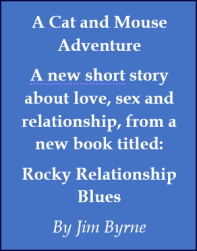 He could be very solicitous, always wanting to please her, with breakfast in bed, or flowers, or a little gift. And very passionate.
He could be very solicitous, always wanting to please her, with breakfast in bed, or flowers, or a little gift. And very passionate.
Then he’d make her very angry, at parties. He drank a bit too much, and often seemed to invite other women into their sphere; but she was very good at controlling that, and quickly excluded them, so they could return to their lovely, safe, controlled cocoon, which was stretched at times by his wild excitement, and attraction to tension and danger.
Neither of them mentioned marriage, though Susan hoped that he would.
That phase lasted about nine months, and then she began to be annoyed by the way he clung to her. But if he moved away from her, she had an irresistible urge to pull him back; to make sure she would always know where he was; and to make sure nothing happened that was not to her taste. Most of the time she was able to control his movements, but he had to go to work, and he now insisted on his right to take exercise on his bike. She hated cycling, and had not done any form of exercise since her teenaged love of tennis.
***
 He mounted the bike outside the garage where his Tesla, Model S, all-electric beauty was safely stored, and adjusted his cycling helmet. Nobody else in Suffolk owned the latest Tesla! He’d never even seen one on the streets of London.
He mounted the bike outside the garage where his Tesla, Model S, all-electric beauty was safely stored, and adjusted his cycling helmet. Nobody else in Suffolk owned the latest Tesla! He’d never even seen one on the streets of London.
He glanced back over his shoulder and saw Susan peering out of the living room window. He gave her a quick wave, and pushed off down the drive and onto the quiet country road that ran past their bungalow.
He was worn down by all the arguments, all her criticisms and challenges, and her constant questioning of where he had been; what he had done; who he had seen. This had been going on for five or six months now. All the fun had gone out of their relationship. She acted more like his mother than his girlfriend.
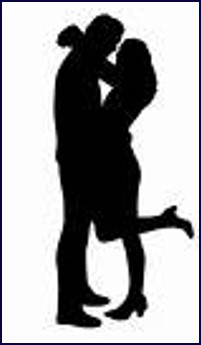 When they’d met and got together, she seemed easy to persuade or manipulate into doing the kinds of things that excited him; taking risks; facing challenges. But she was also safe. He did not need to cling to her very much in order to be reassured that she was connected to him. He did not have to fear either that she would run off on him, or that she would make it impossible for him to have any excitement or risk or danger in his life.
When they’d met and got together, she seemed easy to persuade or manipulate into doing the kinds of things that excited him; taking risks; facing challenges. But she was also safe. He did not need to cling to her very much in order to be reassured that she was connected to him. He did not have to fear either that she would run off on him, or that she would make it impossible for him to have any excitement or risk or danger in his life.
He had always liked the excitement of being unpredictable. Of breaking the rules. Of doing things his parents would not want him to do, and getting away with it. But even when they caught him, he could always outwit them; persuade them that they’d got it wrong; that he hadn’t done anything wrong; and how could they think their little boy could be so naughty? Often, after they had caught him doing something wrong, he could persuade them that they were the ones who should feel guilty.
He could trick them, and in the end, anybody, into believing anything he wanted them to believe. Perhaps he should have gone into politics, or into sales and marketing. Instead he became a partner in a highly successful accountancy and financial management company, which specialized in managing investments for wealthy clients. Here again, his capacity to persuade was very helpful to the company, because what he and Gerald mostly sold was hope, promises, and fantasies.
***
 Susan slid the wardrobe doors open, and began to go through Terry’s suit pockets. She did this a couple of times every week, looking for clues. She would resist, resist, and resist, until the tension inside her body and mind became so great she thought she’d explode. She knew he was up to something, but she couldn’t get any substantial evidence.
Susan slid the wardrobe doors open, and began to go through Terry’s suit pockets. She did this a couple of times every week, looking for clues. She would resist, resist, and resist, until the tension inside her body and mind became so great she thought she’d explode. She knew he was up to something, but she couldn’t get any substantial evidence.
Sometimes when he went out cycling, she would wait ten or fifteen minutes, and then go out in her slinky little convertible Porsche Boxster, and drive around at random, hoping to spot him, to see if he was with another woman. But she never saw anything like that. Still, she had her suspicions.
If she found anything suspicious in his pockets, she would confront him with the evidence. But he always had a plausible explanation. Even for the two torn stubs of cinema tickets! How did he explain that? His friend, Frank, had pushed them into his hand, saying “Hide these, for Christ’s sake. My wife would kill me if she found them on me!”
Then he’d challenged her. “Are you calling me a cheat? Do you think I would lie to you? And how could you go through my pockets like that, as if I was your son!”
She would then feel so guilty and tongue-tied that she’d end up blurting out some kind of apology to him. Asking for forgiveness. Trying to make it up to him.
The bastard!
***
He cycled up the bypass, and into the lane that ran through the woods. At the brow of the hill, he stopped and got off, and looked back for a long time. He wanted to make sure he wasn’t being observed. Then he wheeled his bike down the grass bank, through the trees, and into the small clearing by the stream.
Her little red Nissan was parked there, at the end of the dirt track, by the rocks, as usual.
He rested his bike against a tree, and removed his helmet and his cycling shoes. Then he knocked on the car window, and Laila unlocked the door and let him in. Instead of the formal sari she’d been wearing at their previous meeting, she was dressed in a kind of Punjabi blouse and white pyjama pants.
Within seconds he was immersed in the fragrant odours of female India; and feeling the strange excitement of new flesh.
***
November 2014
 The Friday evening traffic jams on the motorway journey home were hellish, at the best of times. But this was not the best of times. Susan had had a rotten week. Rumours in the West End had persuaded some of the actors, who had been represented by her for years, to jump ship and go over to Jerry Mathis, who currently represented about twenty percent of the leading actors on the stage in London, and more than thirty percent of prominent TV actors. Her business model was unravelling, and costs were rising.
The Friday evening traffic jams on the motorway journey home were hellish, at the best of times. But this was not the best of times. Susan had had a rotten week. Rumours in the West End had persuaded some of the actors, who had been represented by her for years, to jump ship and go over to Jerry Mathis, who currently represented about twenty percent of the leading actors on the stage in London, and more than thirty percent of prominent TV actors. Her business model was unravelling, and costs were rising.
On Wednesday she was audited by the tax man, and found to have underpaid taxes for the past three years. The bill would be huge.
Then, because she was so bad tempered in the office, her PA had quit, on Thursday, leaving her with an impossible job on her hands, managing two inexperienced temp typists, and a relief receptionist.
All she wanted to do was to get home, lie in a hot, scented bath, with a glass of red wine, and listen to Madam Butterfly or La Traviata.
She eventually got off the motorway, around dusk, zoomed down the slip road, and onto the bypass, and home via the back road through the village, breaking the speed limit by quite a bit.
It was dark when she parked her Boxster on the forecourt, outside her side of the garage. The lights were on in the living room, and when she looked up, she could see that they were also on in the bedroom and bathroom. Her guts tightened slightly.
She opened the front door with her key, dropped her briefcase and bag on the hall stand, and went into the living room. She noticed that Terry’s mobile phone was on the coffee table, and so she knelt down and tapped the screen three times, and there was his email account. One tap and there was a list of his current and recent emails. The top of the list had a subject line that said, “Dropped your drawers!”
She tapped the line and the email opened.
“Hello sexy, You left your underpants in my car. Neglectful boy! It was great. Chuchie xxx”
Her heart skipped a beat, and then began to pound in her head. She heard him enter the room, and turned towards him, holding his phone over her head. The rage was surging through her body, and her face was burning red.
“One of your tarts has found your y-fronts in her car, you rotten bastard!”
She spat the words out, turned towards the bay window and threw his heavy, Samsung Galaxy phone. The glass shattered and his phone toppled into the rose bed outside.
She ran towards him and began to pound on his chest with her fists. And she kicked him in the left shin.
 He managed to grab her wrists, but her right hand broke free and she slapped him hard across the face.
He managed to grab her wrists, but her right hand broke free and she slapped him hard across the face.
“Bastard!” she screeched into his face, the skin of which looked like the thin veneer on a quick-thinking mechanical machine, making a vast number of computations at once.
“You’ve got it wrong!” he told her, with his creamiest, most reassuring voice.
“You cheating bastard”, she said, struggling to escape from his grip.
“I can explain!” he said.
She managed to get her right hand free again, and this time she dragged her fingernails across his left cheek, drawing blood.
“Pumpkin!” he said then. “It’s an office prank. You’ve been had!”
Suddenly all the rage ran out of her, and she sat back on the coffee table.
“It’s an office prank”, he repeated.
She looked at him, hoping against hope that he wasn’t conning her. Even though, at some level, she knew he was!
“Some of the juniors and one or two of the associates have been very destructive. They’ve hacked into other people’s phones, and sent spoof messages to cause problems.”
She looked blankly at him. It was just about plausible. It made it difficult for her to sustain her rage, or her accusations. She felt she had to engage with his excuse or explanation.
But it was also a tricking too far, and something snapped in her mind. She suddenly felt very sick and tired of this cat and mouse game of his.
“I want to see your phone every day”, she said. “I just don’t trust you anymore”.
“Pumpkin!” he said, imploring her. “Please don’t be unreasonable”.
“I’ve had enough of this stress; this mess; this uncertainty; this… this…” she trailed off.
 Now it was his turn to get on his high horse.
Now it was his turn to get on his high horse.
“It’s a violation of my human rights!” he said. “Nobody has the right to inspect my communications with others!”
He berated her for her suspicious mind; her controlling of his every move; her daily criticisms of his imperfections.
He would make her apologise for this affront to his dignity. And so he went for broke: “If you don’t apologise at once for this terrible, unjustified outburst, this madness” – (he was like one her actors on a Drury Lane stage now) – then this relationship is over. And I will have to leave at once.”
She stared at him in disbelief. She’d caught him red-handed, and he was having a tantrum about her bad behaviour.
She got stuck in a kind of catatonic state, staring at him, dissociated from the present moment, her mind processing years of bad relationships, starting with her father. She stared at him like a shellshocked soldier, kneeling in the middle of the carnage of a recent battle in which many people died.
She was speechless.
“I’m not having this”, he continued, raising his voice threateningly. “I’m going to pack my bags, unless you come to your senses at once”.
Susan crumpled forward onto her knees, she placed her hands over her eyes, and screamed “Bastard of all bastards. Fuck you to Hell!” And then she collapsed onto her face on the thick, woollen carpet, sobbing like an abandoned child.
Terry was not getting his apology, so he marched upstairs and packed his bags. He left in his car with everything that he could fit in, with the intention of sending a man and van for the rest, tomorrow.
***
May 2015
 Moving out of the bungalow had been difficult. Terry had to sleep on Frank’s sofa for two weeks, until Marilyn kicked him out, because he was interrupting the constant warfare that went on between her and Frank. She did not want any ‘accidental peacekeepers’ in her house! And she was sick of Terry’s angry tirades about how unfairly he’d been treated by Susan.
Moving out of the bungalow had been difficult. Terry had to sleep on Frank’s sofa for two weeks, until Marilyn kicked him out, because he was interrupting the constant warfare that went on between her and Frank. She did not want any ‘accidental peacekeepers’ in her house! And she was sick of Terry’s angry tirades about how unfairly he’d been treated by Susan.
So he stayed in Gerald’s spare room until Christmas. And Gerald was happy to listen to Terry’s angry outbursts and bouts of self-pity, so long as they could drink scotch together into the wee small hours. But, because Gerald and Linda were expecting guests, Terry had to move on before New Year, into a cramped, two-room flat over a chippy in Stowmarket High Street. This gave him a much longer drive to the office in London. It’s very difficult to get a decent flat at short notice.
Once he moved into his little flat, he began to enjoy his freedom from Susan’s controlling ways. He stayed in London a couple of nights each week, at a small club he knew, and picked up young ladies in bars or clubs and brought them back to the club for a nightcap.
He had a holiday in Italy, in late January, and had a torrid affair with a teenaged Italian with little English, which lasted seven of his eight days there; and he didn’t let her know his address in England.
Then, in February, he noticed a strange thing. He had begun to miss Susan. He tended to remember the good times, the excitement, the fun, and the initial sexual passion. And the excitement of playing cat and mouse with her!
In March he began to have an affair with one of the female trainers at his local gym. Charmain was a lot of fun, and she liked unusual forms of sex, which he found exciting. He didn’t tell Leila (his Indian steady) about her, and denied that he had sex with anybody else. Leila had started asking him for some kind of commitment, but he was wary of the fact that she might try to control him, so he was very resistant. He promised her he would think about the idea of living together, eventually.
Charmain was also keen on formalizing their relationship, but he pleaded that it was too soon. He had only recently left a difficult relationship.
In April, he began to text Susan with a little more than the previous texts about settling joint bills, etc. Now he began to add, “remember the time” comments. The time in Tibet. The time in Paris.
At first, Susan was resistant to these intimacies. She ignored them, or pooh-poohed them.
Then in May, she began to send flirtatious responses to his little “remember” messages.
By the end of May they had had three meetings over coffee; two visits to a pub; and one roll in the hay in a rented room above an Italian restaurant in Ipswich.
 After the roll in the hay, he had a double problem. Susan was beginning to talk in terms of a “new commitment”; and Leila was asking for a “symbol of their bond”.
After the roll in the hay, he had a double problem. Susan was beginning to talk in terms of a “new commitment”; and Leila was asking for a “symbol of their bond”.
One day, when he was in Old Brockenham, coming out of a coffee shop, he happened to notice a quaint little jewellery shop across the narrow street. He went across and looked in the window. He couldn’t see what he wanted, so he went inside. He asked the man behind the counter if he had any antique cameo brooches. His mother had always worn an old cameo brooch, and he had decided that this might be the kind of symbol that would keep Leila happy.
The man produced a tray of old cameo brooches, and Terry noticed that there were two identical brooches that were particularly attractive, and a lot like his mother’s brooch. So he bought them both, thinking that the other one might be something that would pacify Susan.
~~~
Susan’s six months of separation
 Susan found it very hard to adjust to Terry’s absence. She was in an almost psychotic state for days. She was medicated by her GP, with little blue pills that made her head hurt, but reduced the knot of angry confusion that had almost tipper her over the edge.
Susan found it very hard to adjust to Terry’s absence. She was in an almost psychotic state for days. She was medicated by her GP, with little blue pills that made her head hurt, but reduced the knot of angry confusion that had almost tipper her over the edge.
She did consider suicide a few times, but mostly she was homicidally angry at the man who had used and abused her.
She spent Christmas and the New Year on her own. She had food sent in from the local restaurant, which only did traditional English fare.
She watched TV a lot, and often cried and screamed into her pillow.
In January she took up judo, but didn’t like it.
In February she tried karate, but got a punch in the chest that broke a couple of ribs, and she was strapped up in sticky plaster for two weeks.
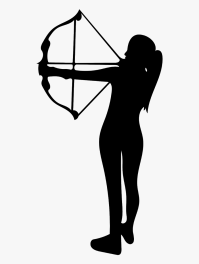 In March she joined an archery club, and had ten lessons with a big German instructor, who seemed to be keen on her, but she resisted his advances. Nevertheless, she went to the archery range three days each week, and practiced until she could hit a bullseye every single time she unleashed an arrow. She was using a Zen approach of non-conscious functioning, which she was learning from a new Japanese coach. Pretty quickly, she could do it on automatic – pull the bow, aim and release the arrow, without any conscious thought – and she was extremely good at it.
In March she joined an archery club, and had ten lessons with a big German instructor, who seemed to be keen on her, but she resisted his advances. Nevertheless, she went to the archery range three days each week, and practiced until she could hit a bullseye every single time she unleashed an arrow. She was using a Zen approach of non-conscious functioning, which she was learning from a new Japanese coach. Pretty quickly, she could do it on automatic – pull the bow, aim and release the arrow, without any conscious thought – and she was extremely good at it.
In April she had a date with a man she met online, through a dating site, but he left her cold; and she left the bar where they’d met, as soon as he went to the gent’s toilet.
In May she started getting weird texts from Terry. At first she wanted to kill him for his arrogant insensitivity.
 Later, she began to remember how much fun he’d been.
Later, she began to remember how much fun he’d been.
She remembered the times, in Tibet, and Paris, and many others, where they’d laughed until their ribs had hurt; and she remembered how his body had felt, next to hers, in their bed, in the first couple of weeks of getting this bungalow.
Then, when he asked her out, she thought: Why not?
~~~
June 2015
On 3rd June, Terry moved back into the bungalow. To celebrate, she had Italian food delivered, and they had a candlelit dinner in their own dining room.
On 7th June, they had their first row, about her going through his pockets; but they managed to patch it up very quickly.
On 10th June, they had their second row, about him disappearing for two days, because, according to his account, he’d gone swimming on a beach somewhere; somebody’d stolen his phone and wallet; he had to walk to the nearest town in his swimming trunks; and it took two days to get home. (What was he supposed to say, when Leila, the once serene Indian lady, had tuned into Attila the Hun, and tied him to her bed, and locked him in her room? He had to trick her into untying him, before he could escape, and head for home).
 That was the day Susan moved into the spare room, telling him there would be no more sex for him!
That was the day Susan moved into the spare room, telling him there would be no more sex for him!
On Saturday 13th June, they were sitting sullenly, eating a salad lunch, when the doorbell rang. Terry went to answer it, and there, on the doorstep, in full Indian sari, was Leila. She had his cameo brooch pinned to the top of her blouse.
Before he could pull the door behind him, Susan pushed past him. She looked at Leila, and her cameo brooch; she felt the identical cameo brooch pinned to her own blouse; and she pushed Terry with all of her might against the door, and raced for the stairs.
He knew where she was going. She kept her longbow on top of the wardrobe in what was now her bedroom. He knew he was in mortal danger.
His car keys were on the coffee table, but he’d locked his Model S in the garage. And his bike was also in the garage, with one buckled wheel removed and standing by the wall!
He knew he could run fast, because he’d won medals in school.
As Leila grabbed the front of his sloppy jumper, he pushed her away, and sprinted across the forecourt and down the tarmacked drive. He was running as fast as he could; running for his life; imagining Susan, climbing onto a pouffe, getting the longbow and her quiver of arrows.
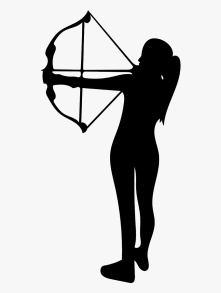 She would run down the stairs, but she would have to be careful not to trip, so that would slow her down. Leila might be in the way as she reached the front door, so Susan would have to get her out of harm’s way before she could take any other action.
She would run down the stairs, but she would have to be careful not to trip, so that would slow her down. Leila might be in the way as she reached the front door, so Susan would have to get her out of harm’s way before she could take any other action.
He’d almost reached the gate, heart pounding, lungs hurting, but feeling confident that he had outrun her, when the image of the cleavage of the barmaid in The Bull, in Newmarket, came into his mind, causing a lascivious smile to cross his face. It was the fascinating way her breast swelled and swung as she pulled a pint with the stiff tap-handle on the bar that fascinated him.
At that moment, Susan found her target!
Thunk!
~~~
Afterthought
If you enjoyed that story, you will love this collection: Dramatic Stories about Love, Sex and Relationships.***
~~~
That’s all for now.
Best wishes,
Jim
Dr Jim Byrne
Author/Editor/Publisher/Counsellor/Psychotherapist
Executive Director of ABC Bookstore Online UK
~~~
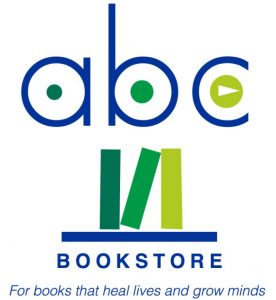

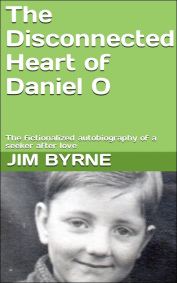
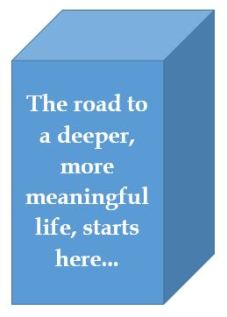 Hack writers are beloved of the publishing industry. Principled writers are unpopular with vested interests. They are a nuisance to the forces of political expediency. They undermine the evil side of human nature.
Hack writers are beloved of the publishing industry. Principled writers are unpopular with vested interests. They are a nuisance to the forces of political expediency. They undermine the evil side of human nature.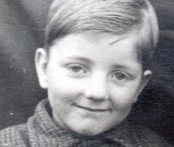 Whatever wounds you have, hidden in your childhood history, I do hope you will try to dress them; process them; and heal them. And one way to do that is to practice principled writing about them, whether as private autobiographical writing, or published fictionalized autobiography.
Whatever wounds you have, hidden in your childhood history, I do hope you will try to dress them; process them; and heal them. And one way to do that is to practice principled writing about them, whether as private autobiographical writing, or published fictionalized autobiography.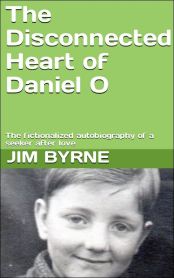 Our mothers have the most dramatic effect upon our psychical and mental health, and upon our life chanced. So choose your mother carefully!
Our mothers have the most dramatic effect upon our psychical and mental health, and upon our life chanced. So choose your mother carefully!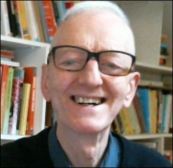 Best wishes,
Best wishes,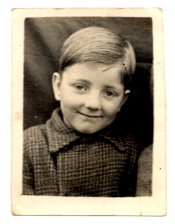 Writers are people who write.
Writers are people who write.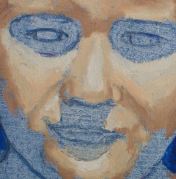 Vasha Popov screwed his little face up, like a well-squeezed dishcloth. He stared into the big, mottled mirror, looking for the echo of his facial contortions. And there it was. This was him. This blue face, with the sad calf eyes and the downturned mouth. And there in the apparent ugliness of his blue face was the evidence, it seemed, of why Mamu did not let him touch her, or speak to her, or get close to her.
Vasha Popov screwed his little face up, like a well-squeezed dishcloth. He stared into the big, mottled mirror, looking for the echo of his facial contortions. And there it was. This was him. This blue face, with the sad calf eyes and the downturned mouth. And there in the apparent ugliness of his blue face was the evidence, it seemed, of why Mamu did not let him touch her, or speak to her, or get close to her.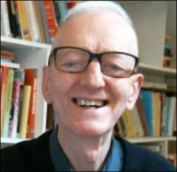 Jim
Jim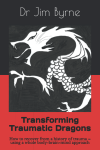 Trauma is all around us. Many humans are seriously damaged by their families of origin, and by their cruel cultures.
Trauma is all around us. Many humans are seriously damaged by their families of origin, and by their cruel cultures.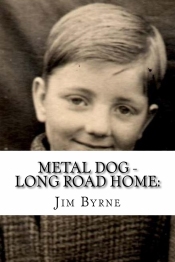
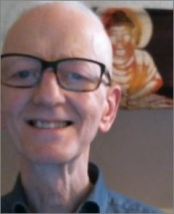 As it happened, I (Jim) did manage to find my way out of the darkness and confusion; out of the autism and dissociation; out of the fear and loneliness. I did my therapy, and I got my reward!
As it happened, I (Jim) did manage to find my way out of the darkness and confusion; out of the autism and dissociation; out of the fear and loneliness. I did my therapy, and I got my reward!